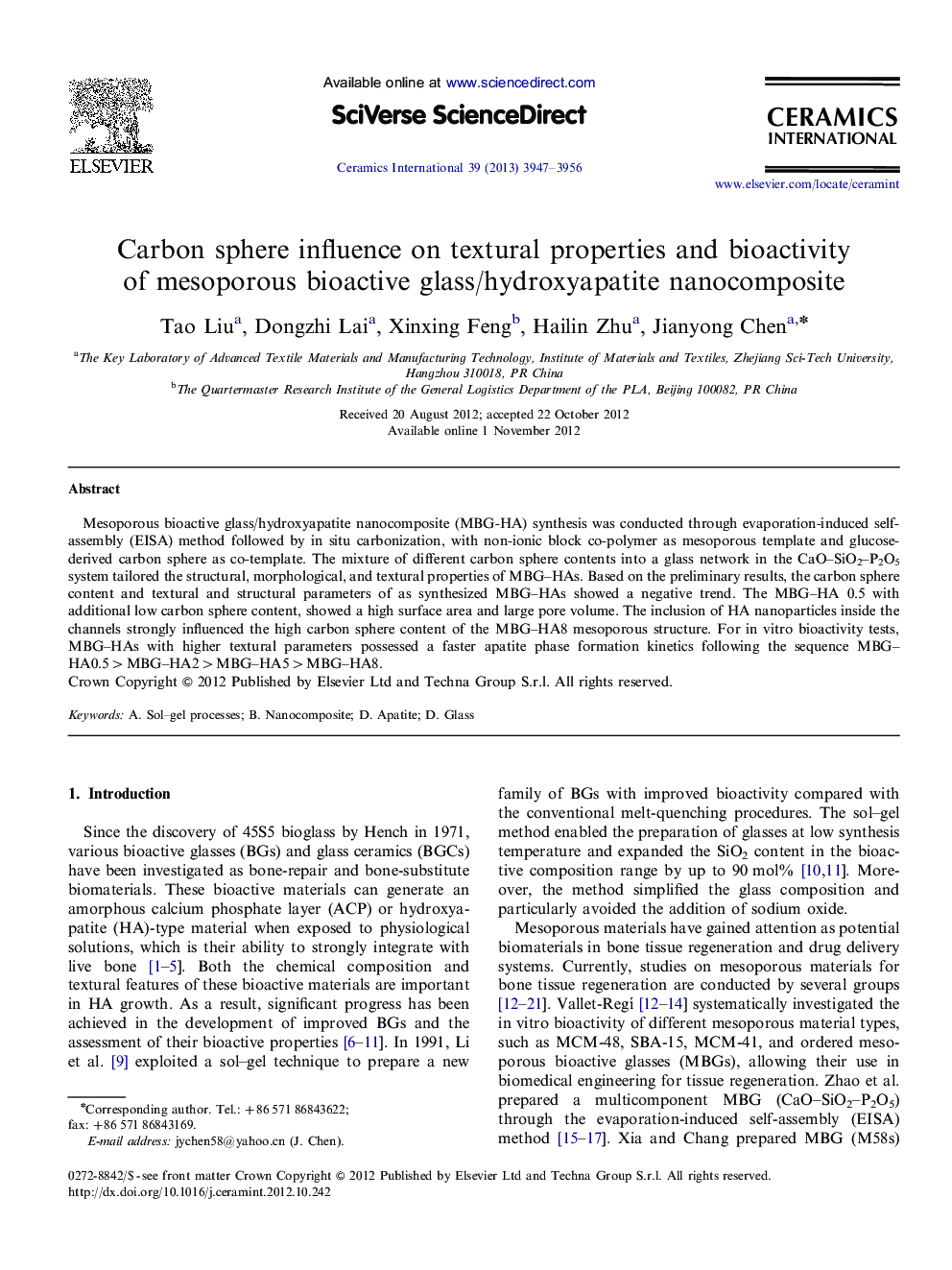| Article ID | Journal | Published Year | Pages | File Type |
|---|---|---|---|---|
| 1461767 | Ceramics International | 2013 | 10 Pages |
Mesoporous bioactive glass/hydroxyapatite nanocomposite (MBG-HA) synthesis was conducted through evaporation-induced self-assembly (EISA) method followed by in situ carbonization, with non-ionic block co-polymer as mesoporous template and glucose-derived carbon sphere as co-template. The mixture of different carbon sphere contents into a glass network in the CaO–SiO2–P2O5 system tailored the structural, morphological, and textural properties of MBG–HAs. Based on the preliminary results, the carbon sphere content and textural and structural parameters of as synthesized MBG–HAs showed a negative trend. The MBG–HA 0.5 with additional low carbon sphere content, showed a high surface area and large pore volume. The inclusion of HA nanoparticles inside the channels strongly influenced the high carbon sphere content of the MBG–HA8 mesoporous structure. For in vitro bioactivity tests, MBG–HAs with higher textural parameters possessed a faster apatite phase formation kinetics following the sequence MBG–HA0.5>MBG–HA2>MBG–HA5>MBG–HA8.
